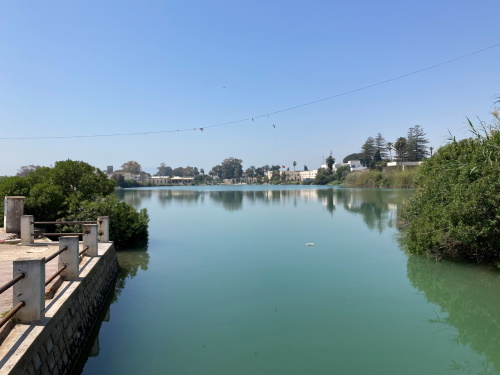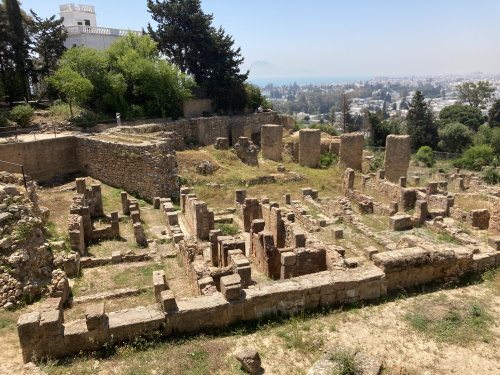Blog WHS Visits
WHS #786: Carthage
Carthage may not be Tunisia’s grandest attraction anymore, its rich and powerful empire by far superseded the importance of the country it currently is part of. Unfortunately, not a lot is known about the cultural history of the Carthaginians – most books focus on the military history and their battles with the Romans (using sources written by Romans). You'll know enough if you listen to only one podcast on that subject. At an exhibition on Punic Carthage that I visited in Leiden in 2015, I found more to my taste (those white and blue glazed pendants!). The accompanying book, “Carthage: fact and myth”, still is the best one I could find as it covers a range of topics including the Punic writing system, the relationship with the Numidians, and its influence on European art.
I choose to do a half-day tour with Le Lemon Tour for my real-life visit. They own a bicycle shop in Carthage and conduct tours – on a bike of course! - to the archaeological sites. They are very professional and you can also just rent a bike to explore the area on your own. That a bike is such a good way of transportation here, also says a lot about the terrain. The sites are all separate “islands”, with their own access, in between the quiet and prosperous residential areas. Fortunately, you have to pay your entrance fee only once: for 12 TD (4 EUR) you can visit the 8 associated sites and they will stamp your ticket at each location.
We started our tour at the Tophet. During the whole itinerary today I tried to concentrate on the Punic aspects and 'think away' the later Roman ones, but this is a Punic location only. Here they buried their children in amphoras, with hundreds of headstones still remaining. The headstones show writing in the Phoenician alphabet and depictions of local gods such as Tanit. It’s a very atmospheric place, especially because of the many trees. One of the species present, the pomegranate, even was named after the Punic: its Latin name is Punica granatum.
We then cycled on towards the Punic harbour. As its naval fleet was Carthage’s greatest asset, they built a military harbour with restricted access behind the commercial harbour. The commercial one was rectangular, the military one circular shaped. The current 2 Tunisian dinar coin shows these two connected harbours very nicely. We cycled along both, but the best views may be had from Byrsa hill. It’s a long distance away, but the shapes can be clearly seen.
Byrsa Hill probably is the main location of this WHS. It has remains from Punic, Roman and colonial times. Here we also encountered the most other tourists. The Punic ruins consist of a residential quarter, now signposted as “the Hannibal district”. It had houses and shops in a fan-shaped plan, that suited the steep terrain.
We further visited remains from the Roman period: the Roman theatre and the Antonine Baths. The baths are the most impressive Roman remains, especially because of their size and their elaborate setup. It really was a spa ‘avant la lettre’, with a huge variety of baths and pools. Except for Byrsa Hill, all locations we visited were very quiet and the roads between them as well. So I had a very pleasant cycling tour and I am happy that I have seen the works of the Carthaginians with my own eyes.
Els - 15 May 2022


